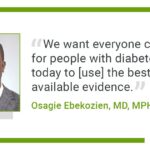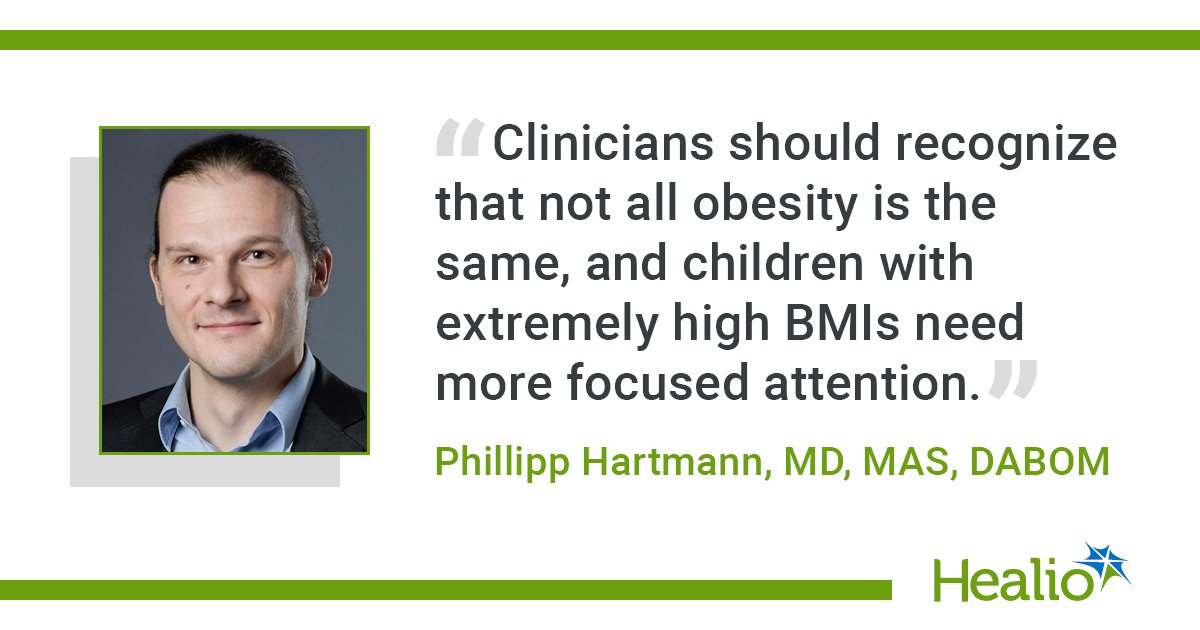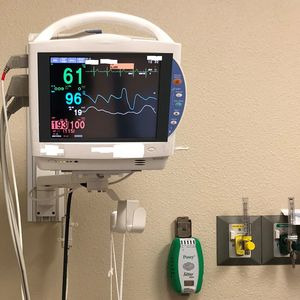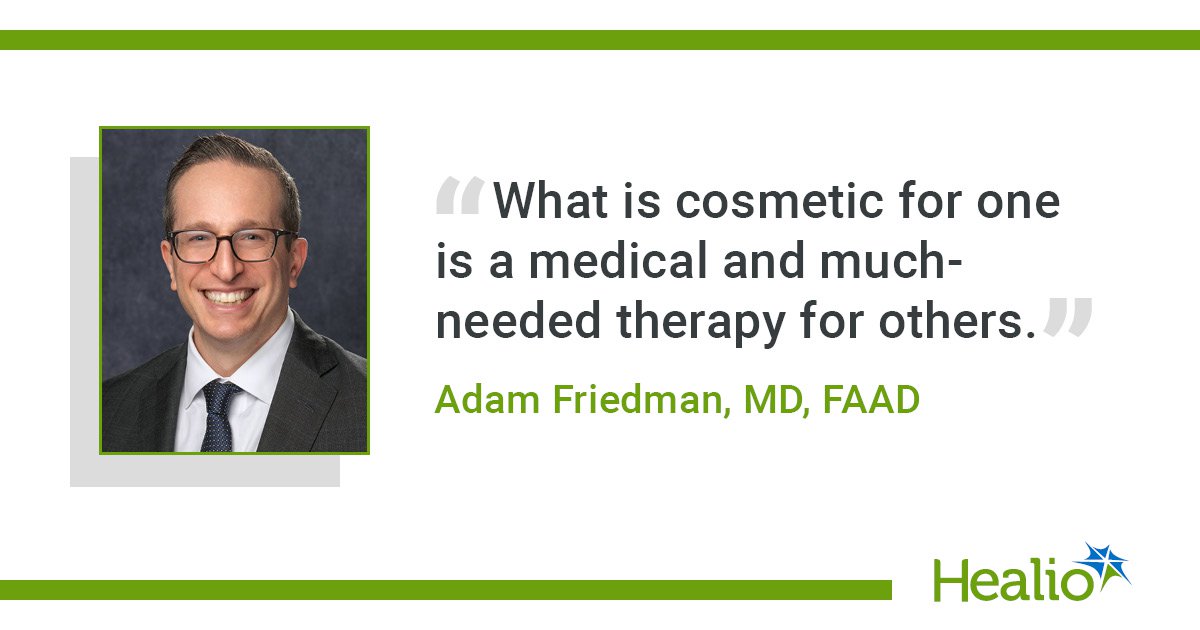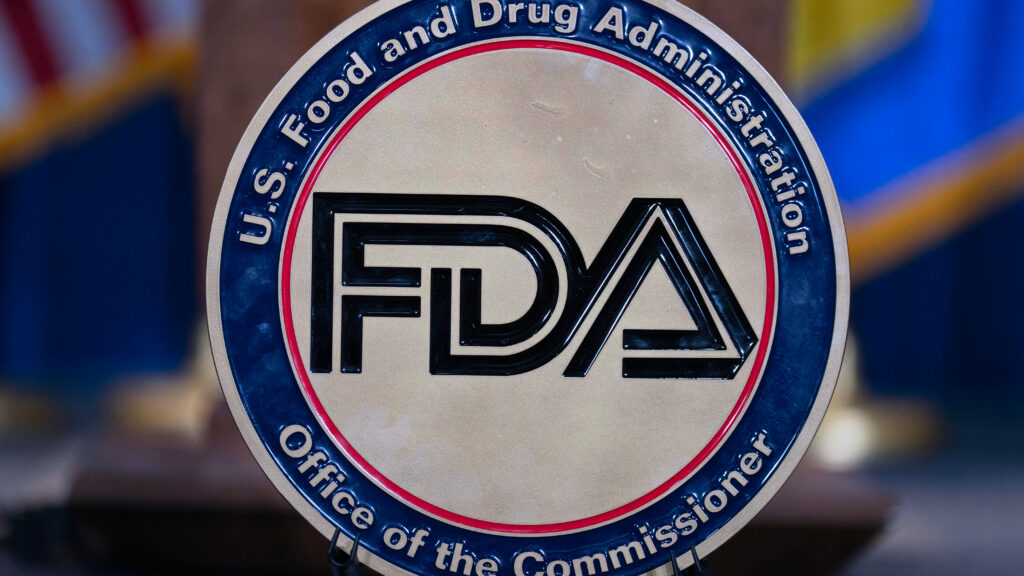August 11, 2025
3 min read
Key takeaways:
- Older teens and non-Hispanic Black adolescents had the highest levels of severe obesity rates.
- Children in higher obesity classes are at greater risk for metabolic complications and other health issues.
Severe pediatric obesity rates have increased exponentially over the past 15 years, according to a study published in JAMA Network Open.
Healio previously reported on the increasing pediatric obesity rates in recent years. Now, this study highlights the major concerns this upward trend brings.

“Extremely severe obesity in children is no longer rare — it now affects over one in 90 children in the U.S. and continues to climb,” Phillipp Hartmann, MD, MAS, DABOM, assistant professor of pediatric gastroenterology, hepatology and nutrition at the University of California San Diego, told Healio. “These kids face serious health problems years before adulthood, and our health care system is often unprepared to help them.”
With major risks associated with severe obesity, including metabolic dysfunction-associated steatotic liver disease (MASLD), diabetes, severe insulin resistance, hypertension and metabolic syndrome, Hartmann and colleagues decided to evaluate the prevalence of pediatric obesity — ranging from traditional classes (1 to 3) to extremely severe (4 and 5) — in a cross-sectional analysis.
The researchers evaluated 2008 to 2023 data from the National Health and Nutrition Examination Survey, including 25,847 children (median age, 10 years; 51% male; 30% non-Hispanic white) aged 2 to 18 years.
Results showed that pediatric obesity prevalence increased across the 15-year span, with all degrees increasing from 19.46% (95% CI, 18.11%-20.89%) to 22.52% (95% CI, 20.89%-24.24%), or a relative increase of 15.7%.
Particularly, extremely severe obesity rose from 0.32% (95% CI, 0.17%-0.59%) to 1.13% (95% CI, 0.78%-1.65%) — a relative increase of 253%.
Looking at the prevalence from 2020 to 2023, extremely severe obesity was most commonly linked to adolescents aged 16 to 18 years (1.99%; 95% CI, 1.31%-2.99%) and non-Hispanic Black adolescents (2.04%; 95% CI, 1.45%-2.86%).
Male adolescents and Mexican youth were also disproportionately affected, according to Hartmann.
“These disparities reflect deeper social and economic barriers — such as unequal access to healthy food, safe outdoor spaces and quality health care,” Hartmann said.
Notably, extremely severe obesity put children at higher risk for metabolic complications, including MASLD (OR = 6.74; 95% CI, 3.3-15.75), prediabetes or diabetes (OR = 4.94; 95% CI, 3.41-7.14), severe insulin resistance (OR = 8.05; 95% CI, 3.7-17.02) and metabolic syndrome (OR = 1.99; 95% CI, 1.45-2.73) compared with obesity classes 1 to 3.
Several of these conditions were significantly prevalent in children with extremely severe obesity, including MASLD (84.62%; 95% CI, 72.48%-91.99%), prediabetes or type 2 diabetes (46.77%; 95% CI, 38.22%-55.52%) and pediatric metabolic syndrome (53.75%; 95% CI, 46.03%-61.3%).
Public health professionals urgently need to address this issue, Hartmann and colleagues wrote. The first step is to recognize the misconceptions underlying obesity treatment, they noted.
“One common misconception is that obesity is purely a matter of personal choices but, in reality, it’s heavily shaped by our environment,” Hartmann said. “Many kids grow up in ‘food swamps’ with few healthy, affordable options, while physical activity is limited by unsafe neighborhoods, long school commutes or screen-heavy downtime. On top of that, some kids are more biologically vulnerable to gaining weight — especially when exposed to high-fat, high-sugar foods early in life.”
Hartmann advises clinicians to consider the individual differences that impact each child.
“We tend to lump all obesity into one category, but our data show that kids with extremely high BMIs are at much higher risk of serious health problems,” Hartmann added. “Clinicians should recognize that not all obesity is the same, and children with extremely high BMIs need more focused attention than they currently receive.”
More specifically, Hartmann suggested that children with obesity classes 4 and 5 should be flagged for more urgent treatment.
“These patients need more aggressive screening and should know what resources are available — whether that’s lifestyle programs, newer medications like semaglutide or referring to pediatric obesity specialists,” Hartmann noted. “Conversations with families should focus not just on weight, but on real risks to liver, heart and metabolic health, and offer concrete next steps.”
Future research is needed to address the specific mechanisms contributing to obesity and long-term health outcomes for adolescents with obesity, Hartmann and colleagues added.
“Public health campaigns must go beyond generic advice and prioritize the communities that are hit the hardest,” Hartmann said. “We hope our findings can support better tools for prevention, earlier diagnosis and more effective treatments for the children who need them most.”
For more information:
Phillipp Hartmann, MD, MAS, DABOM, can be reached at pediatrics@healio.com.





